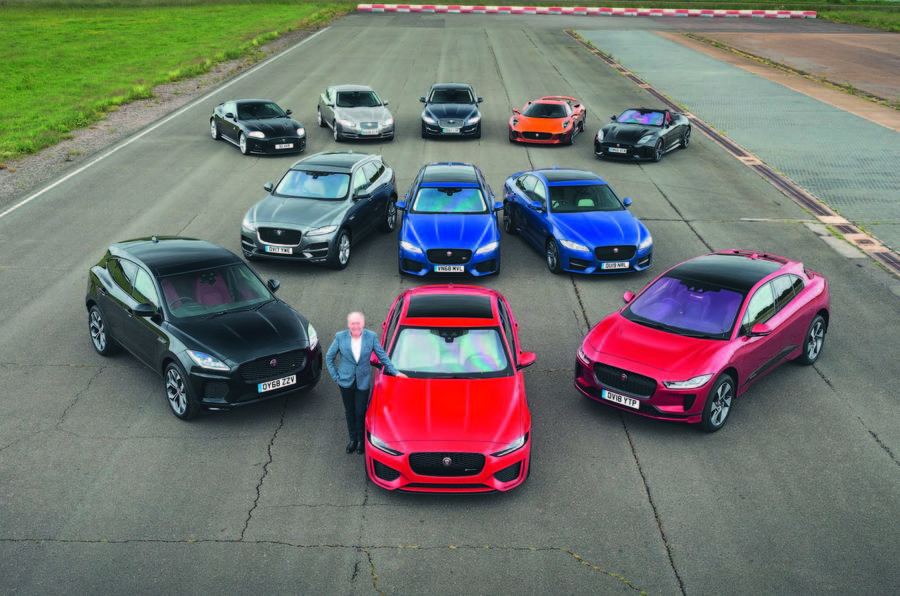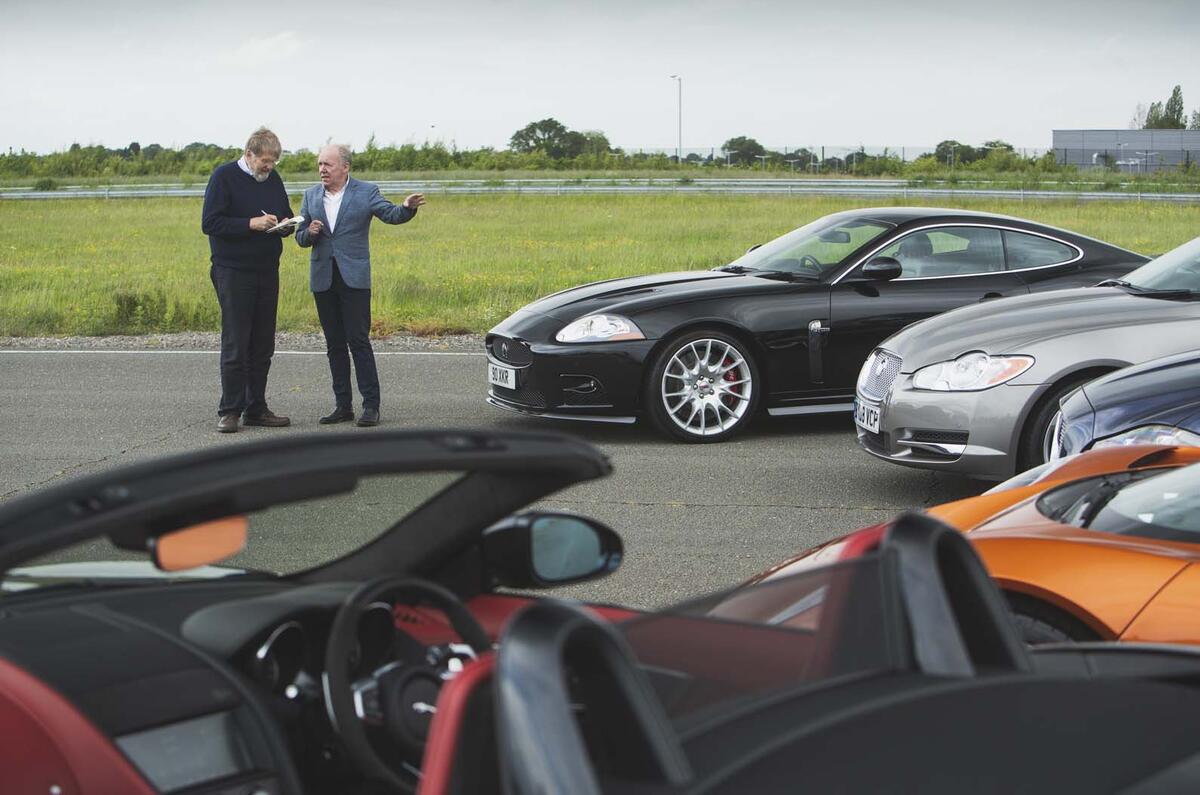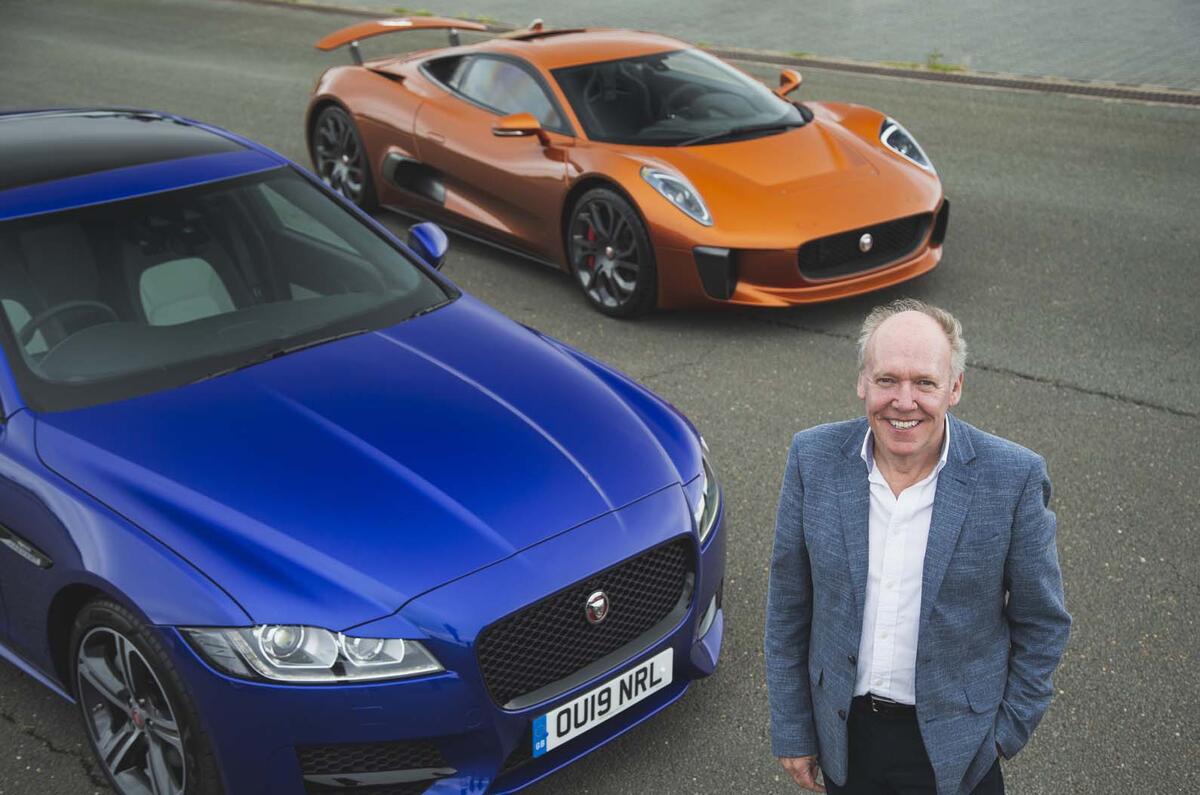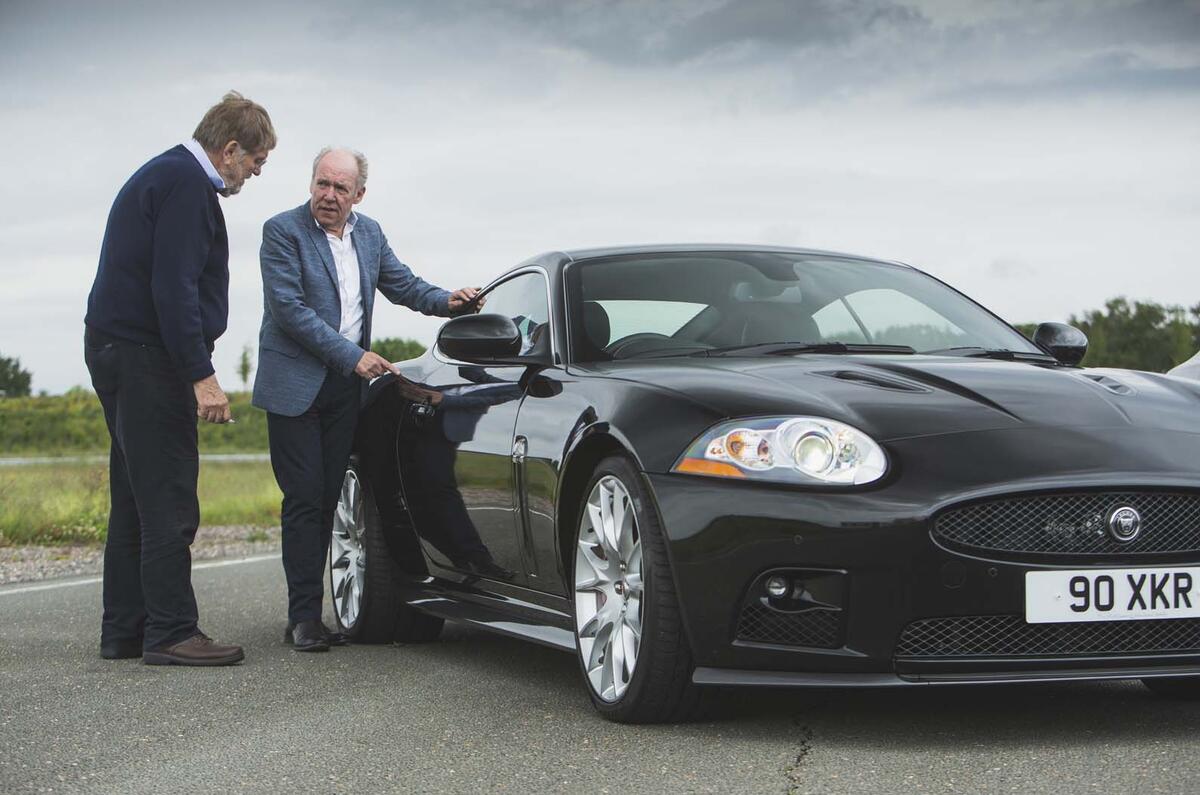Ian Callum, Jaguar design director, is taking the rest of the afternoon off. It is a spur of the moment decision. The original schedule was for Callum, the man who found a new direction for Jaguar in the early 2000s when it needed one most – and followed that by creating a whole new-look model range – to join us at 11am for a photo session at the Jaguar Land Rover (JLR) Fen End test track. He has left an intense and somewhat argumentative engineering meeting to do it and is scheduled to go back to another one much like it.
But as the cameras click, something else has started happening. The phone in Callum’s pocket has started chiming and vibrating like an unquenchable alarm clock. My own is doing the same. It is clear that newswires are suddenly alive with something Callum, 64, has been mulling for a year, decided last Christmas and has kept to himself for five months: that he plans to leave the design director’s job at the end of June, to do his own thing.
Ian Callum leaves Jaguar after 20 years as design director

His replacement, as the stories scream, is to be his colleague and friend of the past 18 years, Julian Thomson, who until now has been Jaguar’s creative design director and advanced concepts man, someone just as well steeped in Jaguar’s history and values as Callum himself.
Now it can be told: Autocar has been privy to the bombshell news for a few weeks. With the nod from Jaguar insiders, we have arranged to photograph Ian Callum with the 11 seminal Jaguar production cars produced by Callum and his expert teams since he arrived at the Whitley design HQ 20 years ago.











































































Join the debate
Add your comment
Its the XJ
I always felt the highlight of Ian's career has been the XJ X350. Just one of the best looking cars period, inside and out. It may not have been full of technology and gadgets like the german rivals but technology ages over time and becomes outdated and fails. The design on the XJ will never age and even today it still looks refreshing to the eyes as the day it first came out. I still remember the birds eye teaser photo of it and I couldn't wait to see it properly. All the nonsense and biased reviews of the XJ were just unfounded. My only criticism was the move to a TFT display for the speedo dials. they should have just refined the look and feel of analogue dials.
Second to that is the 2006 XK. I just couldn't care less about the infotainment system or the ford bits, it was just a drop dead beautiful car. the reramped version even looked like its headlights were designed based on the outline of a cat's eye. there was a certain feline look to them. I wasn't a big fan of the XKR RS with the halfords boy racer aero kit. the standard model was just a beautiful GT cruiser. the fact that Autocar said in a youtube video that the XK was loosely based on a monocoque chassis of the XJS are just unfounded needless comment. Practically all of VW's premium and non-premium brands share chassis and engines but no one complains about that? Far easier to pick on Jaguar these days. Monocoque in principle is a monocoque chassis. the fact that it's bonded and riveted aluminium means the design would have changed to aide strength and rigidity but no one seems to mention that.
I'm a great fan of Ian Callum's work.
The Aston DB7 remains to my eyes one of the most beautiful cars ever. I've liked all the new Jags since then. It really was paramount that the company weened itself off the age old Lyons era design language, great though it was at the time. The first XF really stands out, inside and out. The current one doesn't gel quite so well with me; it is an attractive design but a bit too long in the tail. Usually, a longer car is sleeker and more attractive but oddly, the XF has been upstaged by its smaller sibling, the XE, which I think is exquisitely proportioned. Unfortunately the interior design of both are a bit of a let-down; I don't know what their quality is like, they're just uninteresting. Things are looking up with the I-pace; to make a car of that shape recognisibly current Jaguar is brilliant and the interior looks far more interesting too!
This is nothing more than
Overall I like Callum's simple strong confident lines (much better than Mercedes and BMW for example) But I question Callum's getting rid of Jaguar's traditional references without replacing them with anything very memorable. The general criticism of some of Callum's designs being bland is entirely justified. Jaguar's interiors under Callum are a particular low point.